目次
トグル食品包装機は、食品業界の包装プロセスを自動化するために設計されたデバイスです. これらの機械は、さまざまな種類の食品を効率的にパッケージ化するために特別に設計されています, 製品の安全性を確保します, 品質, パッケージングプロセス全体の完全性.
食品包装機は、幅広い機器を網羅しています, シンプルな手動機械から完全に自動化されたシステムまで. これらのマシンは、充填などのタスクを実行します, 封印, ラッピング, ラベリング, 食品のコーディング. 彼らはさまざまな種類の食品包装材料を扱うように設計されています, プラスチックを含む, 紙, 金属, とガラス.
さらに, 食品包装機は、食品の安全性を確保する上で重要な役割を果たします. 彼らは、業界の基準と規制を満たすように設計されています, 衛生および衛生要件を含む. これらの機械には、汚染のリスクを最小限に抑え、外部汚染源から食品を保護する機能が組み込まれています, ほこりなど, 細菌, と昆虫.
食品包装機はまた、食品包装運用の生産性と効率を向上させることができます. 梱包プロセスを自動化することで、, これらのマシンは、生産出力を大幅に増加させる可能性があります, 人件費を削減します, そして、人的エラーを最小限に抑えます. さらに, これらのマシンは、既存の生産ラインに簡単に統合できます, シームレスな操作を有効にし、全体的なワークフローを改善します.
全体, 食品包装機は食品業界の不可欠なツールです, 食品メーカーが製品を効率的にパッケージ化できるようにします, 製品の品質と安全性を維持します, 消費者の要求に応えます. これらのマシンは、パッケージングプロセスを合理化するだけでなく、企業がより高い生産性と収益性を達成するのにも役立ちます.
フローラッピングマシンは、食品業界で広く使用されている汎用性と効率的なパッケージングマシンです. これらのマシンは、製品をタイトでラッピングするプロセスを自動化します, 保護フィルム, 食品の貯蔵寿命を延長し、新鮮さを維持する密封されたパッケージを作成する.
フローラップマシンをフードパッケージに使用する利点は広範囲です. まず最初に, これらのマシンは、例外的な柔軟性を提供します, さまざまな製品の形状とサイズに対応します. パンやケーキのようなベーカリーアイテムであるかどうか, チョコレートやキャンディーなどの菓子, または果物や野菜のような新鮮な農産物でさえ, フローラップパッケージングマシンは、それらすべてを安全にパッケージ化できます. この汎用性により、メーカーは包装業務を合理化し、消費者の要求をより効率的に満たすことができます.
さらに, 水平フローラップマシンは、食品の周りに密封を保証します, 汚染からそれを保護し、その味と質感を維持する. 熱シーリングとフィルム張力の組み合わせを通じて, これらのマシンは、酸素と水分が製品の品質に影響を与えるのを防ぐ安全な障壁を作り出します. この気密パッケージは、食品の安全性を高めるだけでなく、貯蔵寿命も延長する, 廃棄物を減らし、消費者により長い期間新鮮な製品を提供する.
今日のペースの速い社会で, 利便性は、消費者の購入決定において重要な役割を果たします. フローラッピングマシンは、個々の部分または小さなサービングで食品の包装を可能にすることにより、この側面で優れています. このパッケージ形式は利便性を高めます, 消費者が簡単なスナックやポーションコントロールされた食事を簡単につかむことができます. さらに, フローラッピングマシンは、再シール可能なパッケージを作成できます, 顧客が製品の一部を消費し、残りを後で節約できるようにする, 新鮮さを確保し、無駄を最小限に抑えます.
フローラッピングマシンを使用して、多数の食品が一般的に包装されています, これは、彼らの広範な適用性を強調しています. グラノーラバーのようなスナック食品, クッキー, また、ポテトチップはこの方法を使用して頻繁に包装されています. フローラッピングマシンは、ヨーグルトカップのような単一サービスアイテムのパッケージ化にも使用されています, チョコレートバー, エネルギーバー. スライスしたパンなどのベーカリーアイテム, クロワッサン, そして、マフィンは通常、フローラッピングマシンを使用して最大の新鮮さを使用してラップされます. さらに, フローラッピングは、レタスのような新鮮な食材を包むために広く利用されています, キュウリ, そしてニンジン, 彼らの品質を確保し、貯蔵寿命を延長します.
結論は, フローラッピングマシンは、製造業者に多才なものを提供することにより、食品包装に革命をもたらしました, 効率的, 幅広い食品をパッケージ化するための便利なソリューション. 気密シールを作成する能力を備えています, 貯蔵寿命を延長します, さまざまな製品の形状とサイズに対応します, フローラッピングマシンは食品業界にとって不可欠なツールになりつつあります. スナック食品から新鮮な農産物まで, これらのマシンは、製品の品質を確保する上で重要な役割を果たします, 廃棄物を減らす, 消費者の要求に応えます.
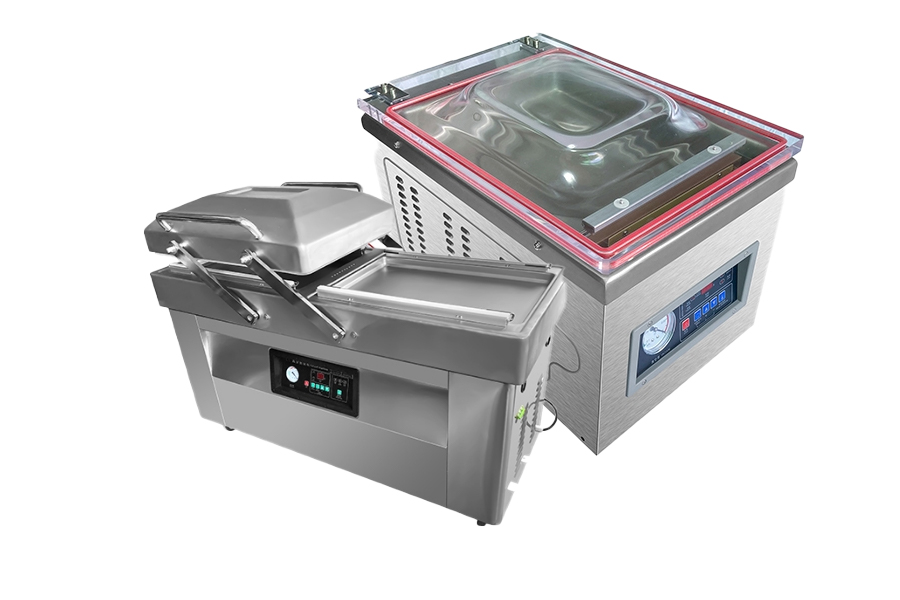
プライマリパッケージングマシンの分野の主要なプレーヤーの1つは、真空パッケージングマシンです. この驚くべき機器は、品質と新鮮さを維持しながら、さまざまな食品の貯蔵寿命を延長する上で重要な役割を果たします。. 真空包装の世界を掘り下げて、その利点と、このパッケージング技術から一般的に利益を得る食品を探りましょう.
真空パッケージマシンは、製品を密封する前に包装環境から空気を除去するように設計されています. 酸素を排除することにより, これらのマシンは真空を作成します, 気密パッケージで製品を密封します. このプロセスは、酸化による腐敗のリスクを大幅に減らします, 食物の腐敗と劣化の原因となる多くの微生物が繁栄するために酸素を必要とするので.
真空包装機の主な利点の1つは、食品の貯蔵寿命を延長する能力にあります. 酸素を除去することにより, これらの機械は細菌の成長を阻害します, これは、劣化プロセスを遅くします. このテクニックを使用してパッケージ化された食品は、品質を損なうことなく長持ちできます, 味, および栄養価. 真空パッケージは、自然な色を維持するのにも役立ちます, テクスチャ, 食べ物の香り, 消費者のための全体的な視覚的魅力と味覚体験を強化する.
さらに, 真空パッケージは、食品廃棄物の最小化に貢献します. 貯蔵寿命を延長することによって, 在庫管理を可能にし、腐りやすいアイテムの早期処理の必要性を減らします. 結果として, 企業は、財政的損失の減少を経験し、食料の流通と消費に対するより持続可能なアプローチに貢献することができます.
さまざまな食品は、真空包装の恩恵を受けています. 新鮮な肉, 牛肉など, 家禽, とシーフード, 腐敗を遅くするために、一般的に真空密封されています, 彼らのジューシーを保持します, 冷凍庫の火傷を防ぎます. 同様に, チーズ, 硬い品種と柔らかい品種の両方, 多くの場合、真空パッケージ化されて、長期間にわたって最適な状態に保つためにパッケージ化されます. さらに, 果物や野菜は、新鮮さを維持するために真空密閉できます, パリッとした, とフレーバー, 全体的な貯蔵寿命を改善します.
さらに, 真空パッケージマシンは、パンのような焼き菓子を保存するのに非常に効果的です, ケーキ, とペストリー. 空気を取り除くことによって, これらのマシンは、カビの成長を防ぐのに役立ちます, 製品をより延長するために、製品をそのままにしておいしいものに保つ.
結論は, 真空パッケージマシンは、さまざまな食品の寿命を延ばすための例外的なソリューションを提供します, 元の特性を保存しながら. 包装環境から酸素を排除することにより, これらの機械は細菌の成長を阻害し、腐敗のリスクを減らします. その結果, 食べ物は好みを維持します, 外観, 長期間の栄養価. 新鮮な肉やチーズから果物や野菜まで, 真空パッケージマシンは、食品生産者と販売業者が製品を最大限に鮮度と品質で保証するための非常に貴重な資産です。.
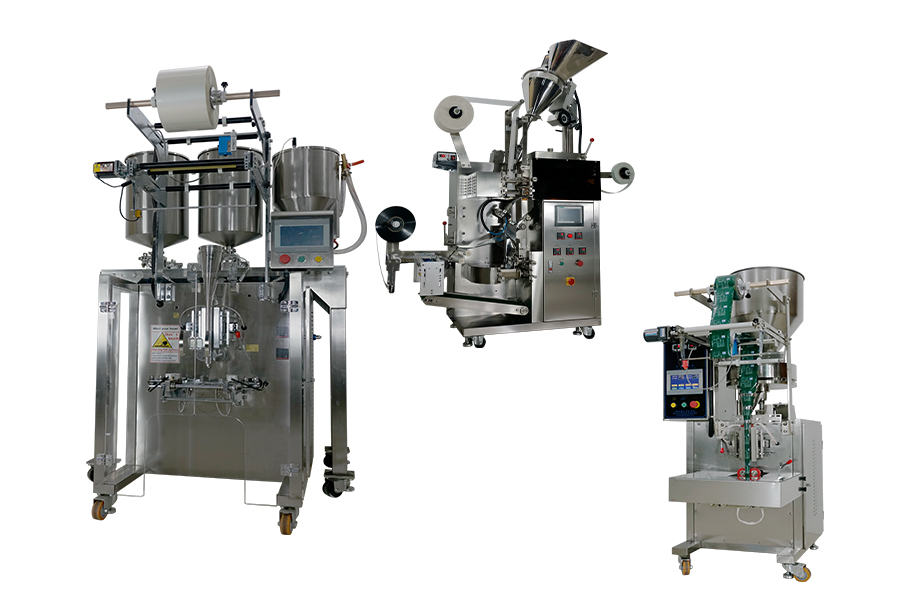
フォームフィルシール (FFS) 機械は食品業界の包装プロセスの不可欠な部分になっています. これらの高度な自動システムは、作成するように設計されています, 埋める, パッケージをしっかりとシールします, 合理化されたパッケージソリューションを最初から最後まで配信します. これらの注目すべき機械の仕組みを掘り下げましょう, 彼らが食品産業に提供する利点, そしてそれらを使用して一般的にパッケージ化されている食品.
フォームフィルシールマシンは、本質的に3つの主要な機能を1つの流体プロセスに結合します. 初め, それらは、パッケージ材を希望の形状に形成します, ポーチまたは容器を作成します. それから, それらは、製品を形成されたパッケージに正確に測定して埋めます. ついに, 彼らは熱でパッケージを密封します, 接着剤, または他のシーリングメカニズム, 製品の安全性と長寿を確保します. このオールインワンプロセスは、シームレスかつ迅速に行われます, その結果、効率と生産性が向上します.
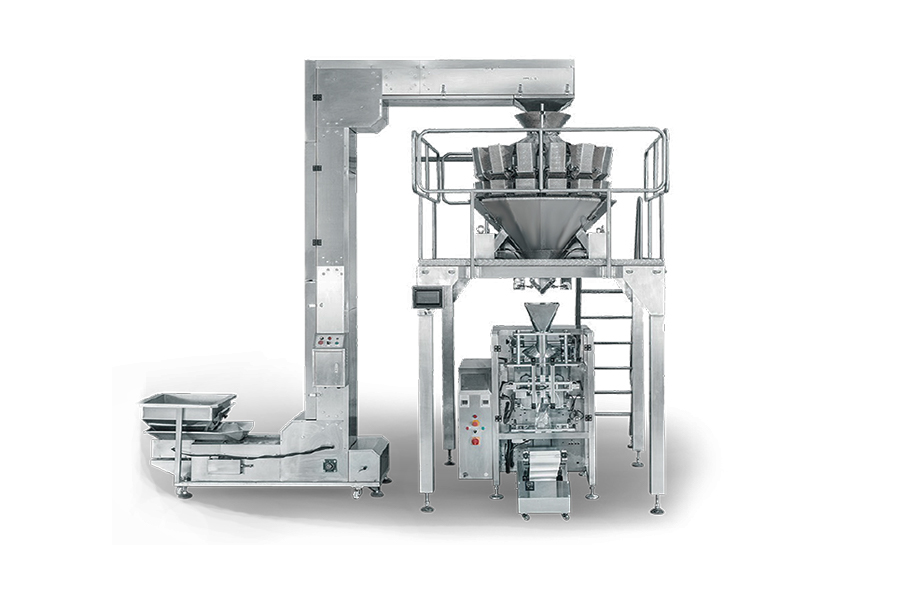
食品業界でフォームフィルシールマシンの使用に関連するさまざまな利点があります. まず最初に, 高速操作により、迅速な包装が可能になります, メーカーが消費者の需要をタイムリーに満たすことを可能にする. これにより、生産ラインがスムーズに実行され続けるだけでなく、市場での製品の一貫した供給も保証されます. 第二に, FFSマシンは、優れたパッケージの完全性を提供します. 水分などの外部要因から製品を保護する強力なシールを作成することにより, 酸素, および汚染物質, これらの機械は食品の貯蔵寿命を延長するのに役立ちます. これ, 順番に, 廃棄物を削減し、包装された食品の全体的な品質を向上させる. さらに, FFSマシンは多用途で柔軟です, さまざまなパッケージサイズに対応します, 形, および材料. この適応性により、食品メーカーはさまざまな市場要件に対応し、多様な製品を効果的にパッケージ化できます。.
フォームフィルシールマシンは、食品業界全体で広く利用されています, この技術を使用して多数の食品がパッケージ化されています. 例には、コーヒーのような乾燥または粉末の商品が含まれます, スパイス, 小麦粉, と砂糖, 効率的に測定され、さまざまなサイズのパッケージに埋められます. 飲料などの液体製品, ソース, また、調味料はFFSマシンを使用してパッケージ化されます. さらに, 新鮮な農産物などの腐りやすい食品, 乳製品, 肉は、改変された雰囲気の包装を使用して多くの場合パッケージ化されます (地図) テクニック. これには、製品の貯蔵寿命を延長するパッケージ内に制御された雰囲気を作成することが含まれます. FFSマシンは、このプロセスの実行に優れています, 彼らを食品業界で非常に求めています.
結論は, フォームフィルシールマシンは、食品の包装方法に革命をもたらしました, 食品業界に多くの利点を提供します. シームレスに形成する能力, 埋める, シールパッケージは効率を保証します, 品質, および製品の安全. ドライグッズから液体アイテム、腐りやすいアイテムまで, FFSマシンは、幅広い食品のパッケージ化において重要な役割を果たし続けています. これらの高度なパッケージソリューションを採用することは、すべてのパッケージに品質と新鮮さを提供することで、メーカーだけでなく最終消費者にも利益をもたらす.
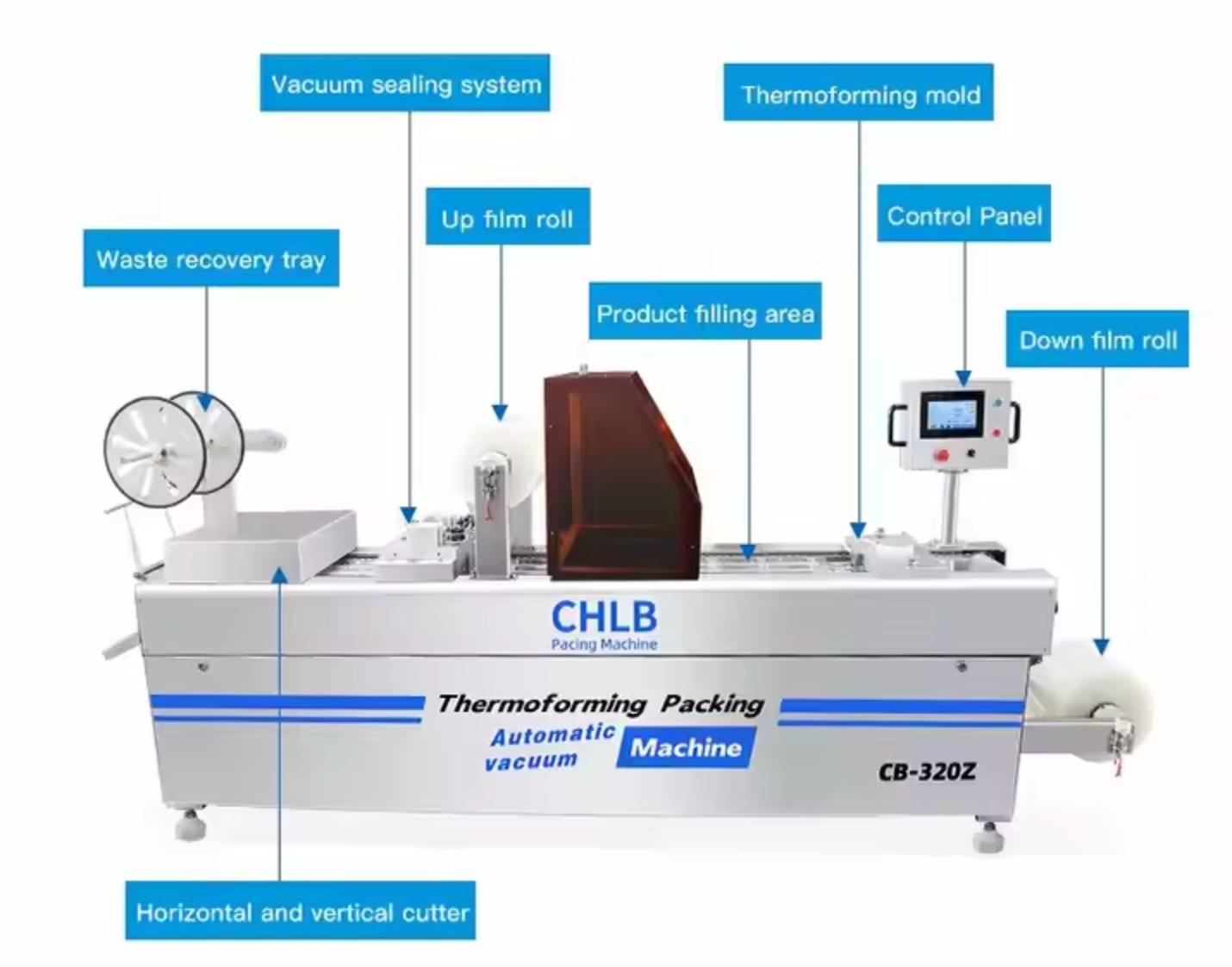
熱成形包装機は、食品業界の主要な包装システムの重要な要素です. これらの機械は、トレイ内の食品を安全に密封するように特別に設計されています, 気密で改ざん防止パッケージングソリューションを提供します. 食品包装プロセスにおける機能と重要性を理解するために、熱成形梱包機をより深く掘り下げましょう.
熱成形包装機は、プラスチックなどの材料で作られた事前に形成されたトレイで食品を密封するために使用される機械装置です, アルミニウムまたは段ボール. これらのマシンは、製品をトレイに配置するプロセスを自動化します, それを封印し、通常はトップフィルムまたは蓋をしている素材を適用します. シーリングは熱によって達成されます, トレイ材料が溶けます, どちらかの真空であるシールを形成します- または、製品の新鮮さを維持し、貯蔵寿命を延長するためのマップ対応.
熱成形パッケージマシンは、水分を排除する安全な障壁を作成することにより、高レベルの製品保護を提供します, ガスと外部汚染物質. これは、食品の完全性と品質を維持するのに役立ちます, 貯蔵および輸送中の腐敗や汚染のリスクを減らす.
トレイシーリングマシンによって作成された堅牢なシールは、保護シールドとして機能します, 酸素の侵入を防ぎ、食品用の制御環境を維持する. これにより、腐りやすいアイテムの貯蔵寿命が延長されます, 彼らがより長い期間新鮮で望ましいままであることを保証する.
熱酸化梱包機は、魅力的でカスタマイズされたパッケージデザインを可能にします. トップフィルムまたはリディングマテリアルには、製品関連の情報で印刷できます, ブランディング要素, 目を引くグラフィックス, 食品の全体的な視覚的魅力を高め、そのブランドアイデンティティを強化する.
熱成形包装機は、すぐに食べられる食事の包装に広く使用されています, サラダなど, 調理済みのパスタ料理, または肉ベースの準備. これらの機械は食事の新鮮さと清潔さを保証します, 消費者が外出先で便利なオプションを作成します.
Thermoforming真空パッケージは、新鮮な果物や野菜を包装するための人気のあるテクニックです, プロデュースを表示および保存するための効率的で視覚的に魅力的な方法を提供する. シールは、腐敗につながる可能性のある外部要因からそれらを保護しながら、内容物を鮮明で活気に保ちます.
ヨーグルトのような製品, カッテージチーズ, そして、バターの個々の部分は、一般的に熱成形パッケージマシンを使用してパッケージ化されています. これらのマシンは、汚染を防ぐタイトなシールを保証します, 消費者のテーブルに到達するまで乳製品の品質と純度を維持する.
要約すれば, 熱成形パッケージマシンは、食品の主要な包装プロセスにおいて重要な役割を果たします. エルメティックシールを作成する能力, 製品保護を提供します, 貯蔵寿命を延長します, ブランディングを促進します。, すぐに食べられる食事を含む, 新鮮な農産物, および乳製品.
ケースパッキングマシンは、さまざまな業界の包装プロセスにおいて重要な役割を果たします, 特に食品産業. これらのマシンは、効率的な輸送と保管のために製品をケースにグループ化するタスクを自動化します.
いくつかの理由により、食品業界では効率的なケースパッキングが最も重要です. まず最初に, それにより、輸送および取り扱い中に製品が安全に配置され、保護されることが保証されます. 製品をケースに安全に梱包することにより, 損傷や破損の可能性は最小限に抑えられます, 腐敗と汚染のリスクを減らす. これは、品質と安全性を維持するために慎重な取り扱いを必要とする腐りやすい食品を扱うときに特に重要です.
さらに, 効率的なケースパッキングにより、簡単な在庫管理が容易になり、人件費が削減されます. ケースパッキングマシンの助けを借りて, 製品は、迅速かつ正確にカウントおよび整理できます, 倉庫プロセスの高速化. This not only streamlines operations but also enables efficient tracking of inventory levels to prevent stockouts or overstocking.
ケースパッキングマシンは、さまざまな製品をパッケージ化するために食品業界で広く使用されています. 注目すべき例には、缶詰が含まれます, 野菜など, 果物, とスープ, where the machines ensure the tight arrangement of cans within cases to prevent shifting or damage. 同様に, ケースパッキングマシンは、一般的に飲料の包装に利用されます, such as bottled water, ジュース, and soft drinks. これらのマシンは、ボトルをケースに効率的にグループ化します, 安定した安全なポジショニングを確保します.
Other food products that are often packaged using case packing machines include snack items like chips, クッキー, そしてチョコレート. これらの繊細な製品を正確に配置することにより, ケースパッキングマシンはその形状を維持し、破損を防ぎます. さらに, ケースパッケージは、詰め込まれた肉に使用されます, 冷凍食品, そして焼き菓子, 食品業界におけるこれらの機械の重要性をさらに強調する.
結論は, ケースパッキングマシンは、製品を安全にパッケージ化するプロセスをケースに自動化することにより、食品業界で重要な役割を果たします. 効率的なケースパッキングにより、輸送中の食料品の保護と保存を保証するだけでなく、在庫管理を合理化し、人件費を削減します. 汎用性と広範囲にわたる使用, ケースパッキングマシンは、さまざまな食品を包装するための非常に貴重なツールであり続けます.
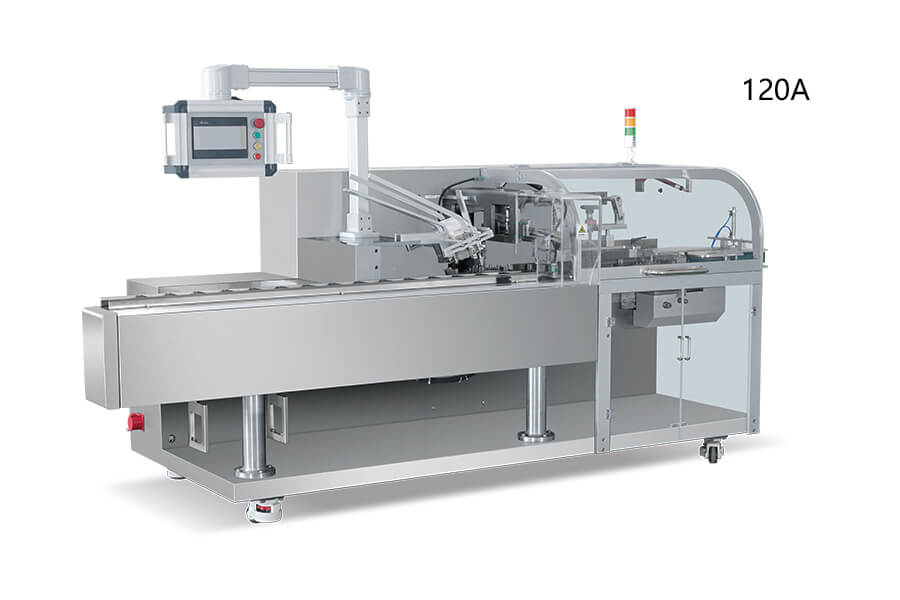
パッケージングは、食品の安全性とプレゼンテーションを確保する上で重要な役割を果たします. 二次パッケージの重要な要素の1つは、カートニーマシンです. これらの高度な機械は、食品のパッケージ化方法に革命をもたらしました, メーカーと消費者の両方に多くの利点を提供します.
カートニーマシン, 彼らの名前が示すように, 包装製品用のカートンまたは箱を作成するために特別に設計されています. これらのマシンは自動化されています, 非常に効率的です, 大量の食品を扱うことができます. プロセスは、マシンが正確にカートンを折りたたんで密封することから始まります, その後、カートンに食品を挿入する. ついに, マシンはカートンを密封します, 配布の準備ができました.
食品包装にカートニーマシンを使用することの重要な利点の1つは、彼らが提供する速度と精度です. これらのマシンは、短期間でかなりの数の製品をパッケージ化できます, 生産コストの削減と全体的な効率の向上. さらに, カートニーマシンは、一貫したカートンの品質とシーリングを保証します, 輸送中の製品の改ざんや損害のリスクを最小限に抑える.
さらに, カートニーマシンは、さまざまな食品の包装に汎用性を提供します. それらの柔軟性により、さまざまな形状とサイズの製品をパッケージ化できます, シリアルボックスなど, 飲料カートン, 冷凍食品パッケージ, スナックボックス, もっと. この適応性により、カートニーマシンは幅広い製品を生産する食品メーカーにとって理想的な選択肢になります.
カートニーマシンの利点は、生産と利便性を超えて拡張されています. 消費者向け, これらの機械は、食品が完璧な状態でそれらに到達することを保証します. 気密シールと安全なパッケージを備えています, カートニーマシンは、パッケージ化された食品の新鮮さと味を維持するのに役立ちます, 全体的な消費者体験を向上させます.
多くの食品は、カートニーマシンを使用して一般的に包装されています. 朝食用シリアル, 例えば, 多くの場合、カートンで販売されます, 簡単な注ぎと保管を可能にします. さらに, 牛乳などの飲み物, ジュース, ソフトドリンクはカートン内で安全に密閉されています, 液体内容物を外部要因から保護します. スナックボックス, クッキーなどのアイテムが含まれています, チップ, とクラッカー, カートニーマシンを一般的に利用する食品の別の例です.
結論は, カートニーマシンは食品用の包装業界に革命をもたらしました. 速度を提供します, 正確さ, 多用途性, 消費者体験が向上しました, これらのマシンは、食品メーカー向けのゲームチェンジャーです. 多種多様な食料品をパッケージ化する能力を持って, カートニーマシンは、製品が完璧な状態で消費者に届くようにします, 鮮度と品質を維持します. 食品包装の競争の激しい世界で, カートニーマシンは実際に頼りになるソリューションになりました.
パレタイジングマシンは、商品の保管方法に革命をもたらしました, 輸送, 業界全体に分配されました. これらの洗練されたマシンは、パレタイズのプロセスを自動化します, 効率的な保管と輸送のために、パレットに製品を配置および積み重ねることが含まれます. このセクションでは、パレタイズ装置の包括的な理解を提供します, 彼らの重要性と食品業界でのアプリケーションを強調する.
パレタイジングマシンは、幅広い製品を処理するように設計されています, 缶やボトルから箱やバッグまで. これらのマシンは、高度なロボット工学と自動化テクノロジーを使用して、各アイテムをパレットに正確に配置します, 安定した安全な負荷を作成します. 重い負荷を処理し、正確に動作する機能を備えています, パレタイジングマシンは、パレット化プロセス全体で最適な効率と安全性を確保します.
パレタイズ機の重要性は誇張することはできません. 効率的な保管と輸送は、さまざまな業界で運営されている企業の成功に不可欠です. パレタイジングマシンを使用することにより, 企業は生産性を大幅に向上させ、手動パレット化に関連する人的エラーを最小限に抑えることができます.
パレタイジングマシンを使用することの主な利点の1つは、スペース使用率を最適化する能力です. 均一でコンパクトな方法で製品を配置することにより, パレット荷重はより高く積み重ねることができます, 倉庫や流通センターで利用可能な垂直スペースを最大限に活用する. これは、追加のストレージスペースの必要性を減らすことでコスト削減につながるだけでなく、在庫管理プロセスを合理化する.
さらに, パレタイジングマシンは、迅速かつ一貫したパレット化を可能にします, ワークフローの改善と労働要件の削減につながります. 時間がかかり、身体的に厳しいタスク, 重い製品を持ち上げたり、正確に積み重ねたりするなど, 効率的に自動化されています. これにより、生産性が向上するだけでなく、労働者の負傷のリスクも最小限に抑えます, より安全な作業環境を作成します.
食品業界では, パレタイジングマシンは、毎日処理する必要がある大量の製品のために広範な使用を見つけます. フードプロセッサとメーカーは、パレット化する機械に大きく依存してパッケージを合理化します, ストレージ, および配布操作. さまざまな食品, 缶詰など, ボトル入り飲料, パッケージ化されたスナック, 冷凍食品, そして、新鮮な農産物でさえ, これらのマシンを使用して一般的にパレット化されます.
例えば, 飲料製造工場で, パレタイジングマシンは、ボトル入り飲み物のケースをパレットに効率的に積み重ねる, 流通センターまたは小売店への輸送の準備ができています. 同様に, パン屋で, パレタイジングマシンは、パレットにパンとペストリーのトレイを楽に配置します, 適切な取り扱いと無傷のパッケージを確保します.
要約すれば, パレタイジングマシンは、効率性の点で比類のない利点を提供します, 生産性, さまざまな製品の保管と輸送の安全性. 食品産業, 特に, これらの機械に大きく依存して、幅広い食品をパレット化する, 配布のために安全かつ便利にパッケージ化されていることを確認します. パレット化プロセスを自動化することにより, 企業は事業を強化できます, コストを削減します, そして最終的には効率的かつタイムリーに消費者に製品を届けます.
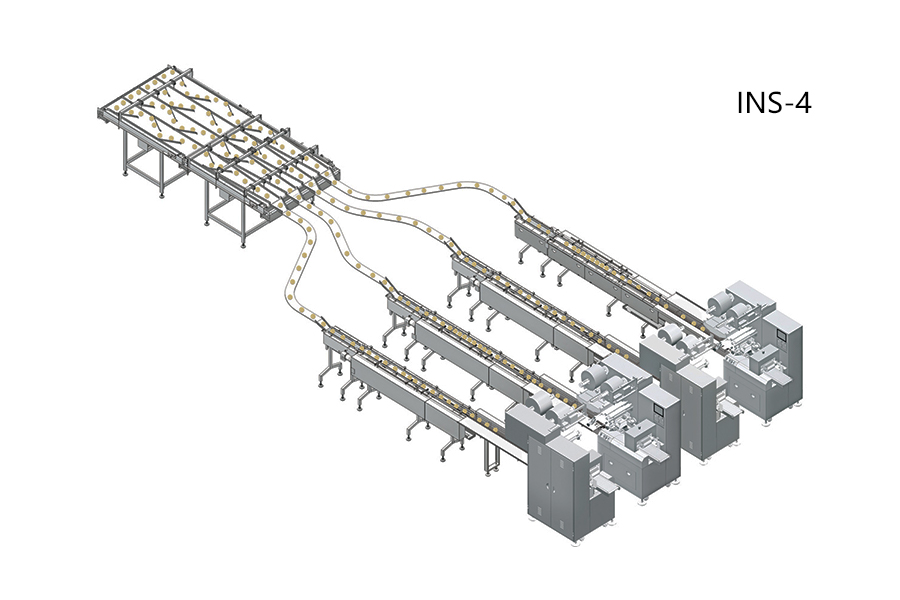
梱包ラインは、パッケージングプロセスを自動化する統合システムを指します. それらはさまざまなマシンを網羅しています, 装置, 効率的にパッケージ化するために調和して動作するコンベア. 梱包ラインの中心に, 通常、充填などの特定のパッケージング機能を実行するパッケージングマシンが見つかります, 封印, ラベリング, またはラッピング. これらのマシンは相互接続されています, パッケージングプロセス全体を通じて製品の継続的な流れを可能にする.
梱包ラインは、産業で重要な役割を果たします, 生産性と効率の向上に貢献するいくつかの利点を提供する. まず最初に, 梱包ラインは、包装操作における手動労働の必要性を排除します, 人間の誤りと疲労を軽減します. 繰り返しタスクを自動化します, より高い生産率と一貫した包装品質を可能にします.
第二に, 梱包ラインは、コンパクトなレイアウトで複数のマシンとコンベヤーに対応することにより、スペースの使用率を最適化します. これにより、合理化され、整理されたパッケージングフローが可能になります, 製造施設の貴重な床面積を節約します.
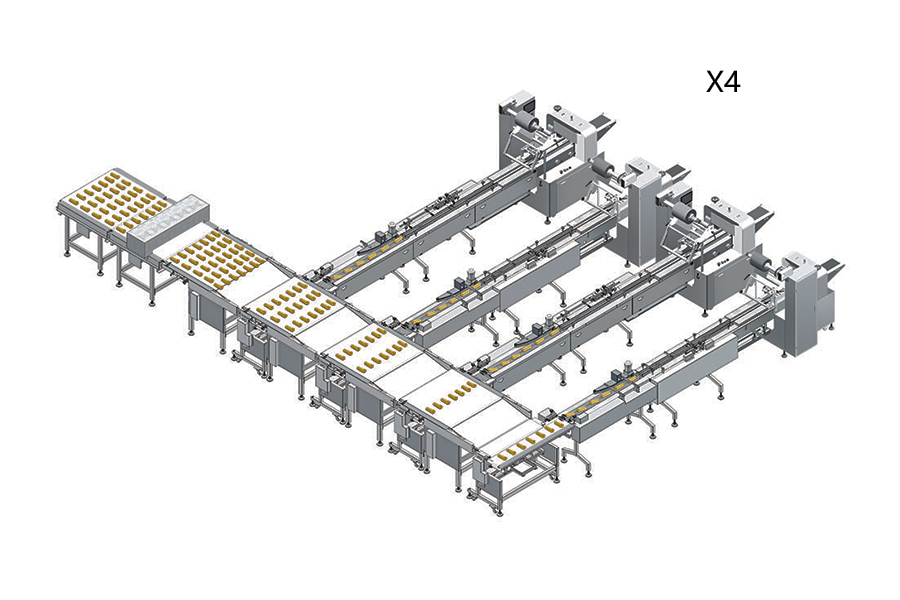
さらに, 梱包ラインは、さまざまなパッケージ材料の処理に柔軟性を提供します, サイズ, と形. さまざまなマシンの統合を通じて, 梱包ラインは、さまざまな製品の特定のニーズに適応できます, 幅広い食料品への適合性を確保します.
結論は, 梱包ラインは、最新のパッケージング操作に不可欠です, 合理化プロセス, さまざまな食品の効率的な包装を確保します. タスクを自動化することにより, スペースの最適化, 汎用性を提供します, これらのシステムは生産性を向上させ、企業が今日のペースの速い市場の需要を満たすことを可能にします.
このブログでは, 食品業界で広く使用されているさまざまな種類の食品包装機について説明しました. フォームフィルシールマシンなどのマシンを探索しました, 真空パッケージマシン, およびカートニーマシン, 食品を効率的にパッケージ化する上で重要な役割を果たす.
特定の食品と生産ニーズに適したパッケージ装置を選択することが最も重要です. 異なる食品には、ユニークな包装要件があります, 適切なマシンを選択すると、これらの要件が効果的に満たされることが保証されます. これは、食品の品質と新鮮さを維持するのに役立つだけでなく、生産性を向上させ、浪費を減らします.
先を見ています, 食品業界の食品包装機の未来は有望なようです. テクノロジーの進歩により, より自動化されたインテリジェントなパッケージマシンが見られることが期待できます. これらのマシンは、パッケージングプロセスを強化するだけでなく、効率と持続可能性を改善するための貴重なデータも提供します.
全体, 適切な包装機に投資し、新しいテクノロジーに遅れずについていくことは、間違いなく食品メーカーにとって有益であり、製品の品質と顧客満足度の最高水準を確保すること.
袋包装機の調達? 無料で見積もりを入手したり、経験豊富な専門家からソリューションの詳細を入手したりできます.
お客様のニーズに合わせた最適な無料パッケージソリューションを受け取るには, 以下のフォームに記入して送信してください.

